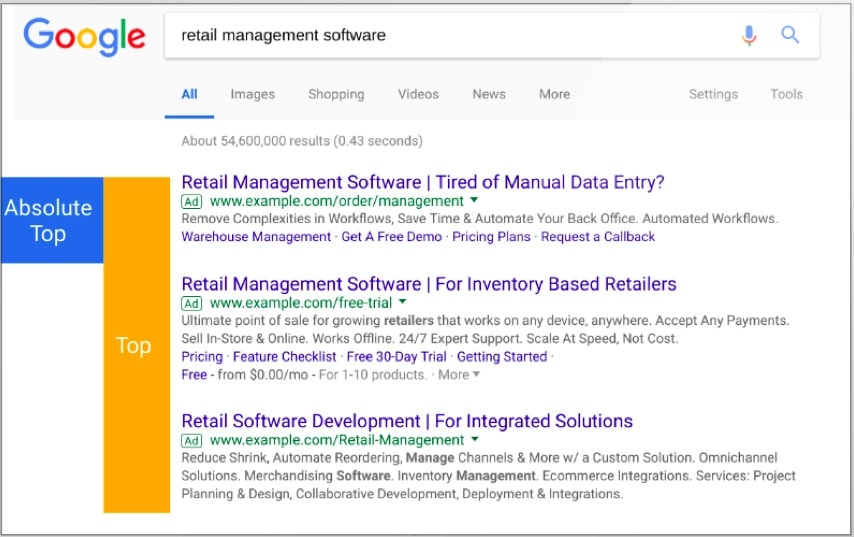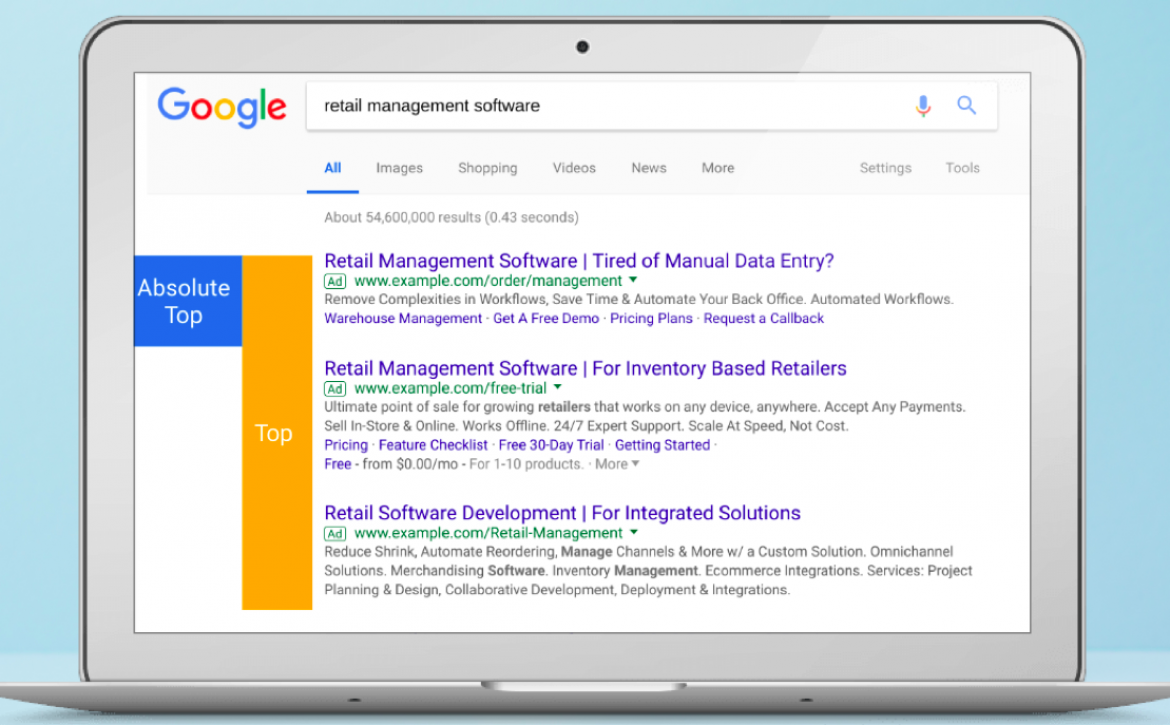How the Replacing of Google’s Average Position Could Affect You
Google’s Average Position is Going Away
We plan to sunset average position in September of this year.
– Google Ads
In place of the average position metric which will be going away, Google has added a number of new metrics which are meant to give advertisers a greater level of clarity when reviewing the performance of their ads.
What is Average Position?
Average position is represented as a number that indicates which order your ad appeared in relative to the ads of other advertisers. An average position of 1 for example would indicate that on average your ad appeared in the 1st position, the highest position on the results page relative to the other ads.
However sometimes the placement of ads in the search engine results can begin at the bottom of the page, below the organic results. An average position of 1 doesn’t necessarily mean your ad appeared at the top of the page, only above the other ads, and this is partly why Google have introduced the new metrics.
Why Is Average Position Being Replaced?
Google has constantly developed the way ads are presented within the search results, and on the display network, across a myriad of devices. The placements of ads is now more dynamic, and to help advertisers understand where exactly their had has appeared, a new set of metrics is needed.

The New (Improved?) Position Metrics
To help offer advertisers more clarity on the position of their ads, Google has introduced the following new metrics:
- Impr. (Absolute Top) % – is the proportion of impressions your ads have received while in the very first ad position, above the organic website listings.
- Impr. (Top) % – is the proportion of impressions your ads have received anywhere above the organic website listings.
- Search (Absolute Top) Impression Share – indicates the proportion your ad received of the total available impressions at the very first ad position, above the organic listings. For example, if there were 1000 impressions available, and your ad received 300, then your impression share of the Absolute Top would be 30%.
- Search (Top) Impression Share – indicates the proportion your ad received of the total available impressions anywhere above the organic listings.
- Search Lost Abs.Top IS (budget) – indicates the proportion of available impressions your ad missed out on in the ‘Absolute Top’ position, due to budget constraints.
- Search Lost Abs.Top IS (rank) – indicates the proportion of available impressions your ad missed out on in the ‘Absolute Top’ position, due to a low ad rank.
- Search Lost Top IS (budget) – indicates the proportion of available impressions your ad missed out on in the ‘Top’ position, due to budget constraints.
- Search Lost Top IS (rank) – indicates the proportion of available impressions your ad missed out on in the ‘Top’ position, due to a low ad rank.

What is the Advantage of These New Metrics?
Greater Clarity for Potentially Better Decisions
The new metrics provide more clarity on how often your ad has been placed at the actual top of the results page, above the organic listings, where it will be likely to get the greatest exposure and volume of clicks.
The additional metrics also provide clarity on how you can increase the proportion of impressions your ad will receive at the top of the page, whether this is by increasing your budget or improving your ad’s rank.
Dominating Branded Terms
The new metrics are especially useful for when targeting your own brand keywords. Instead of bidding to attain an average position of 1, you can now more clearly see how often your ad is appearing above the organic listings for your branded keywords.
Are there Any Drawbacks?
Clarity on Competition
Although the new metrics do add clarity regarding how often an ad appears above the organic search listings, without the Ad Position metric, it is difficult to know how your ad has been placed relative to your competitors. This is especially true in cases where the ad listings have appeared below the organic site listings.
With Google Ads, we are competing with other advertisers, not the organic listings. With this in mind, it makes sense to have an idea of how our ads are positioned in relation to our competitors.
Without the Ad Position metrics, we won’t be able to see if our ad is on average being placed in position 2 or 3, and to estimate the cost for improving our position.
Increased Costs
The change could potentially lead to an increase in competition, with higher bids in the auctions as advertises vie for the top/absolute top positions.
Adapting to The Change
Would it be nice to continue to have access to the Average Position metric? Yes. But with the changes we are seeing within the marketing landscape, Ad Position is becoming less and less important. Instead we are focusing more on audiences, context, and intent.
The new metrics can help to lend more insight into where on the page users are viewing and engaging with our ads, and should be embraced for what they can offer.
In anticipation of Ad Position being removed, any bid strategies for processes which make use of the Ad Position metric should be switched for those that incorporate the new metrics.
Additionally, it can be useful to view the new metrics in conjunction with the current Ad Position metric, to both see how the new metrics relate to the old, and to get accustomed to using the new metrics to optimise campaigns.

